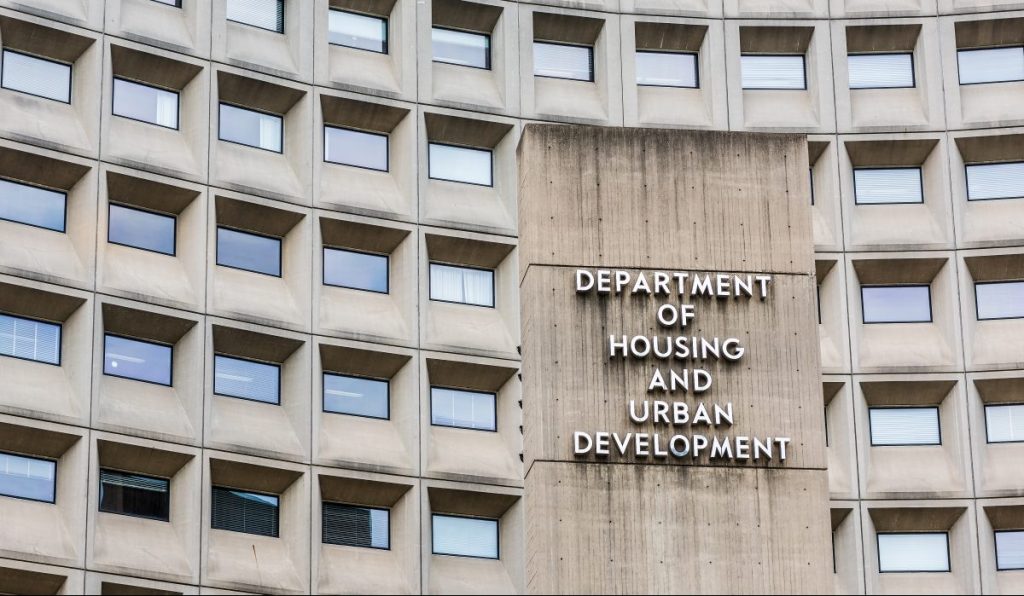The Department of Housing and Urban Development (HUD) has restored its 2015 definition of affirmatively further fair housing with an interim final rule, but it falls short of fully restoring the Obama-era policy.
The rule will go into effect at the end of July, after a 30-day public comment period. It effectively rescinds the Trump administration’s 2020 rule, “Preserving Neighborhood and Community Choice,” which allowed HUD grantees to fulfill fair housing requirements by promising to take any action to promote a narrowed definition of fair housing.
The new HUD rule also revokes several 2020 definitions, including that of “fair housing,” which the Trump administration defined as “housing that, among other attributes is affordable, safe, decent, free of unlawful discrimination, and accessible under civil rights laws.”
The policy is the first step toward fulfilling a promise Biden made in the first week of his administration to reinstate the Obama-era rule.
HUD Secretary Marcia Fudge underscored the importance of restoring the rule, in light of persistent inequity in housing. A half-century after the federal government sought to make amends for a long history of discriminatory housing policies, housing remains deeply unequal.
Why millions of prospective borrowers are stuck in ‘no man’s land’
Borrowers are “stuck in the middle” between the agencies’ minimum FICO requirements and the “FICO gates” imposed by lenders’ credit overlays. We have the tools to help them, we just need to use them.
Presented by: FormFree
“More than 50 years since the Fair Housing Act’s passage, inequities in our communities remain that block families from moving into neighborhoods with greater opportunities,” said Fudge.
Although the Biden administration has signaled its intent to reinstate the 2013 version of the rule, HUD’s latest action does not fully do so.
Standing in the way is a 2015 Supreme Court decision, which upheld but limited the application of disparate impact claims under the Fair Housing Act.
A disparate impact claim allows plaintiffs to challenge business practices that have a discriminatory effect, regardless of intention. But in 2015, the nation’s top court raised the bar for plaintiffs to establish a causal connection between business practices and disparities.
“It’s a pickle”
HUD’s final interim rule cannot reverse the Supreme Court’s decision, to which it must adhere. But another legal wrinkle — a temporary injunction in the last months of the Trump administration — stopped the agency from implementing the Supreme Court changes to the disparate impact claim.
In September 2020, just a month before HUD planned to implement the pared-down disparate impact standard, U.S. District Court Judge Mark Mastroianni found that the changes to the standard made it “easier for offending defendants to dodge liability and more difficult for plaintiffs to succeed.”
“In short, these changes constitute a massive overhaul of HUD’s disparate impact standards, to the benefit of putative defendants and to the detriment of putative plaintiffs,” Mastroianni wrote.
HUD appealed the decision but in February 2021 abruptly withdrew that appeal.
The new disparate impact standard would have “opened the floodgates,” for housing discrimination, said Marcel Negret, a senior planner at the Regional Plan Association.
The impact of that change would be particularly clear in the case of third-party housing screening services, which use black-box, proprietary algorithms in order to find suitable candidates.
Were the 2015 decision and the 2020 rule changes fully implemented, a plaintiff would have to reverse engineer the algorithm to prove the screening service was biased.
For now, that outcome is on hold, but so is the full restoration of the 2013 affirmatively furthering fair housing rule.
“The question is the degree to which HUD can make an argument to revert the rule back to the 2013 version while still arguing it can still be in alignment with the supreme court decision in 2015,” Negret said. “It’s a pickle.”





